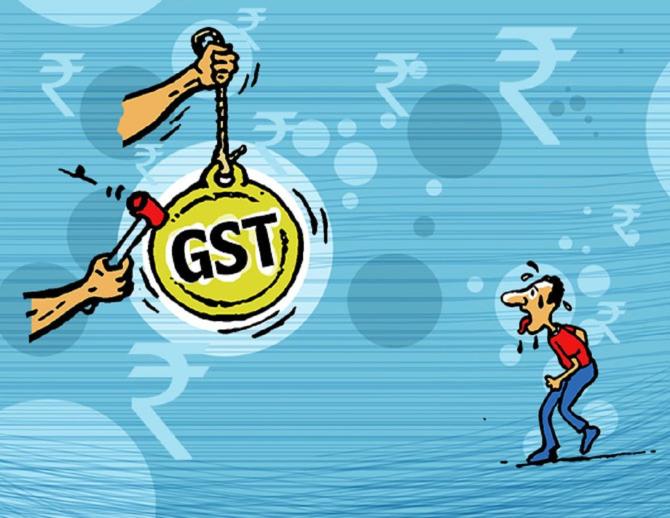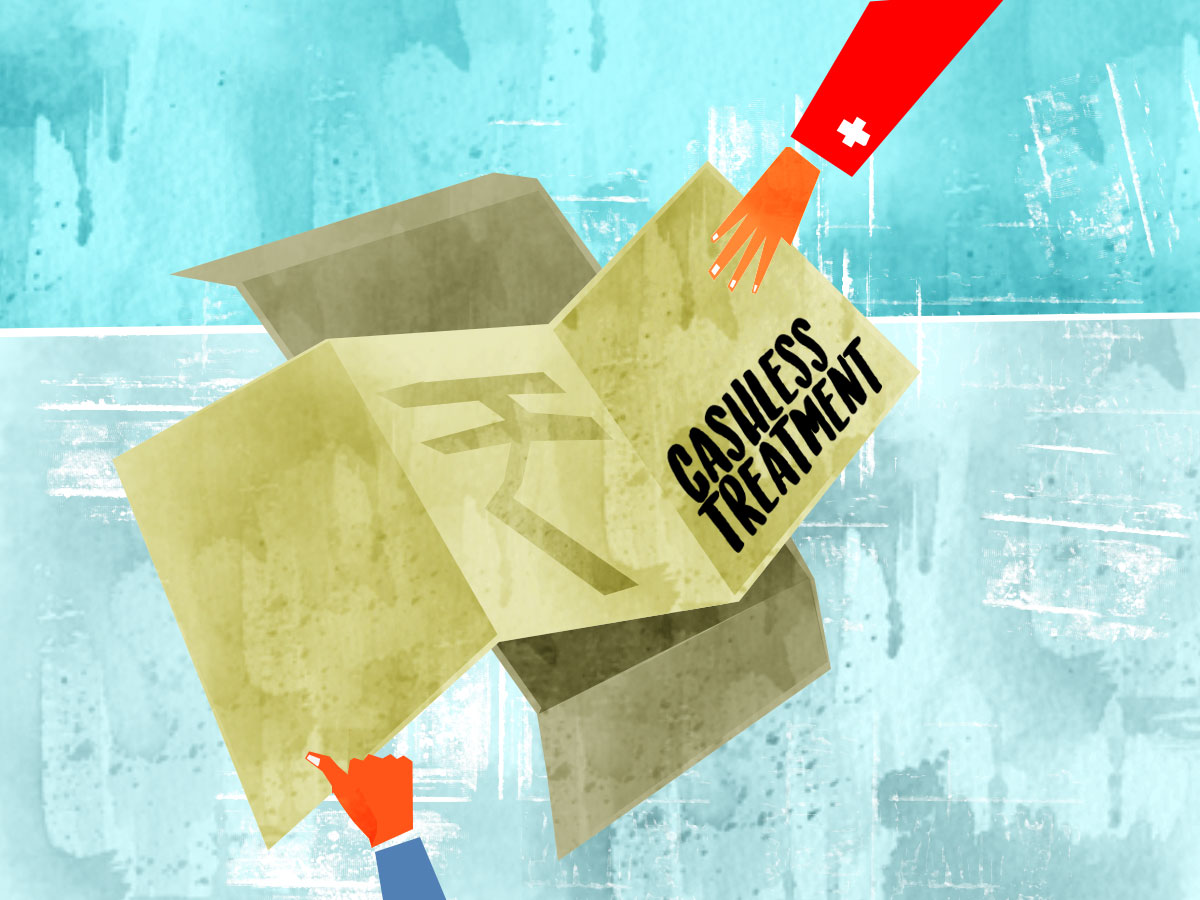India needs Goods and Services Tax (GST) Council-like common platforms between states and the Centre in areas such as land clearances, power, and water to fast-track infrastructure projects to achieve double-digit growth going ahead, said Praveer Sinha, chief executive officer and managing director of The Tata Power Company.

Illustration: Dominic Xavier/Rediff
There is also a need for several policy interventions to overcome procedural and regulatory bottlenecks, Sinha said at the Business Standard Infrastructure Summit 2025 here on Thursday.
In a fireside chat with Sudheer Pal Singh of Business Standard, Sinha said the country’s power sector alone requires around Rs 3 trillion over the next five years.
From the current gross domestic product (GDP) growth rate of 6–7 per cent, he said, the country has the capability to grow up at around 8–10 per cent with a further push in the infrastructure sector.
This, Sinha believed, is required while India will still be the fastest-growing economy for the next 10–20 years.
“I think there is so much more that needs to be done — the speed at which legislations have to come and the speed at which the enforcement of those legislations have to happen,” Sinha said.
“One great example that we have is the common GST Council.
“Possibly, you need a similar council for land clearances, power, water, and then only we will be able to see great speed at which we can transform and make a difference in the country,” he added.
According to Sinha, India has done well in the power sector, from having an installed capacity of around 100 gigawatts (Gw) in 2000 to around 490 Gw now.
He opined that a similar improvement is visible in the solar sector, which has a total renewable target of 500 Gw by 2030.
The sector grew to 115 Gw in 2025 from 5 Gw in 2015 and is poised to touch 290 Gw by 2030.
The share of renewables now stands at 50 per cent.
“That is a huge improvement,” he said. However, the growth is minimal compared to China, he added.
Last year, when India added 30 Gw of renewable capacity, China did 400 Gw.
“This year, in the first six months, China added 212 Gw.
“That is the type of capacity addition that is happening.
“That is the type of change and transformation. We are talking about 490 Gw and they are talking about 2,500 Gw.
“In terms of population, we are virtually the same. There is no reason why we should not do it,” Sinha added.
Further highlighting regulatory bottlenecks, he said: “I think there is a huge necessity to de-bottleneck some of these things.
“We cannot have an economy that is flourishing and growing at a fast pace with the legislature and regulatory framework not supporting it.”
Highlighting the funding requirement, Sinha batted for lower cost of funding, as the country has one of the highest rates in the world. He also advocated opening up restrictions on the insurance sector for funding, equity holding or financing.
“You have the Canadians and others from Europe and the UK who come into funding over here. Our insurers are not allowed to do it, and they are sitting on a huge pile of cash with them. I think there is a necessity to open up some of the channels,” he suggested.
Putting a case for green energy, Sinha said one major issue with India’s power ecosystem is its dependence still on diesel for around 90 Gw of power, along with the agriculture sector’s reliance on diesel generators.
“I think that is a waste. There is no reason why we should have diesel power,” he added.
He said the next 10–20 years are likely to be the golden period for India, as the country needs a lot of work to do in the infrastructure sector.
“India consumes around 1,400 units of power annually, of which the consumption is around 100 units in villages.
“Around 100 units means we consume only around 8–9 units a month.
“That is not what we expect as nearly 40 per cent of our population is staying in villages,” Sinha noted.




